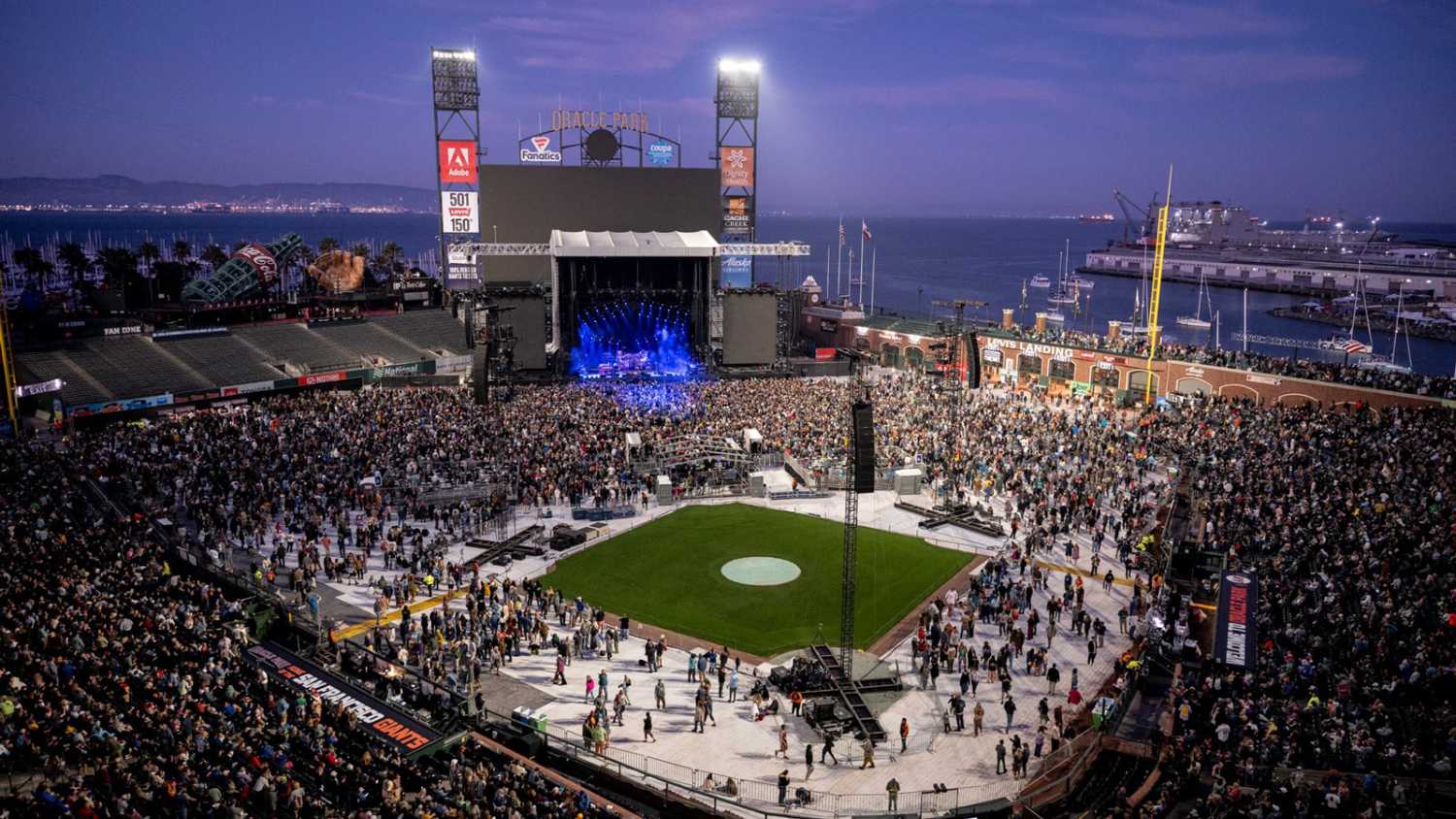Meyer Sound drives Dead & Company final chapter
- Details

However, the magnitude of this final leg of “the long, strange trip” must be measured by more than hard numbers. It marked the coda of a resilient cultural and sociological phenomenon - launched by the Grateful Dead - that has spanned nearly six decades and three generations. Appropriately, the tour’s significance as a milestone of Americana was recognised in a lavishly illustrated 2,500-word feature in The New York Times.
As has been the case since the outset, Dead & Company was again accompanied by a Meyer Sound reinforcement system provided by UltraSound, LLC, and for the second year, the core of the system was powered by Meyer Sound Panther large-format linear line array loudspeakers.
As with last year’s tour, the Panther-based system adapted to a mix of large venues, in this case, one indoor arena, one college football stadium, nine MLB baseball stadiums, and 14 large outdoor pavilions. Each venue type required significant adaptations of the base system, but fortunately, the relatively light weight and compact size of the Panther loudspeakers made the changes quicker and easier.
“The change from Leo family boxes to Panther came in particularly handy for the delay towers,” says Derek Featherstone, tour director/FOH mixer for Dead & Company from the beginning and also CEO of UltraSound. “The audio delay towers are limited in total weight capacity, but with Panther we were able to hang more cabinets out there for better coverage in the back rows of stadiums.”
The main system for stadium shows comprised four main Panther arrays - two front and two side - each with 14 Panther-L long-throw loudspeakers and four Panther-W wide coverage loudspeakers.
“This year, we made a change and split the main and side hangs,” notes Featherstone. “In the past, we would keep them relatively close together, but this time we put them offstage of the video wall. This gave us a more consistent level across the floor. Also, we added a six-box LEO array offstage of the side hangs in order to get better coverage in the far extent of stadiums.”
Deep bass power was propelled by dual, flown end-fire arrays of 11 - split five and six - 1100‑LFC low-frequency control elements. On the ground were nine 700-HP subwoofers and 10 Lyon-W loudspeakers for front fill. Delay towers for stadium shows were loaded with either Panther or Lyon loudspeakers, drawn from UltraSound’s own inventory on the West Coast or cross-rented from DBS Audio for East Coast shows. The band’s foldback system included eight MJF‑210 stage monitor loudspeakers plus two each MJF-212 monitors, 1100-LFC elements, JM‑1P, and UPJ-1P loudspeakers.
The audio quality of Dead & Company concerts has helped build the band’s following, and the fan base was exultant for the final tour.
Featherstone shares credit for audience satisfaction with the entire UltraSound crew: system engineer Michal Kacunel, monitor engineers Lonnie Quinn and Ian Dubois, monitor tech Reilly Williamson, PA techs Sean McAdam and Riley Gajewski, and delay tech Erik Swanson. The audio recording tech was Ross Harris.
The Grateful Dead and subsequent iterations of the original band are connected to UltraSound and Meyer Sound in a symbiotic relationship. Company founders John and Helen Meyer, who attended the final shows in San Francisco, celebrated their past relationships but also looked forward to new possibilities. “This final tour closes an important chapter in the story of the Dead in its many forms,” says Helen Meyer. “But it’s not the end of the book. There’s still more to come, with the people and the music.”
















